Uganda experiences two main rainy seasons annually – from March to May and October to December. During these periods, driving conditions can become particularly challenging across the country. Whether you’re navigating the busy streets of Kampala city, traveling on rural murram roads, or journeying between districts, understanding how to drive safely in wet conditions is crucial for every motorist.
Understanding Uganda’s Rainy Season Challenges
Uganda’s tropical climate brings intense downpours that can transform road conditions within minutes. The combination of heavy rainfall, inadequate drainage systems in many areas, and varied road surfaces creates unique driving challenges. Urban areas like Kampala face flooding issues, while rural roads can become muddy and treacherous.
The rainy seasons coincide with increased traffic as people adjust their travel patterns, making road safety even more critical. Understanding these seasonal patterns helps drivers prepare adequately and make informed decisions about when and how to travel.

Pre-Season Vehicle Preparation
Before the rains arrive, conduct a thorough inspection of your vehicle. Check tire tread depth and pressure, as good tires are essential for maintaining grip on wet surfaces. Worn tires significantly increase the risk of skidding and hydroplaning.
Inspect your windshield wipers and replace them if they’re worn or damaged. Poor visibility is one of the leading causes of accidents during rainy weather. Ensure your headlights, brake lights, and indicators are working properly, as these become crucial for visibility in heavy rain.
Check your vehicle’s drainage systems, particularly if you park in areas prone to flooding. Ensure air intake vents are clear and consider waterproofing sensitive electrical components. Have your brakes inspected, as wet conditions require optimal braking performance.
Safe Driving Techniques for Wet Roads
Reduce your speed significantly when roads are wet. The general rule is to decrease your speed by at least 25% from normal dry conditions. This gives you more time to react to hazards and reduces the risk of losing control.
Increase following distances to at least four seconds behind the vehicle in front of you. Wet roads dramatically increase stopping distances, and this extra space provides a crucial safety buffer. Avoid tailgating, which is particularly dangerous in rainy conditions.
Practice smooth, gradual movements with your steering wheel, accelerator, and brakes. Sudden inputs can cause your vehicle to skid or lose traction. When approaching corners, slow down before entering the turn rather than braking while turning.
Handling Visibility Challenges
 Heavy tropical downpours can reduce visibility to just a few meters ahead. Turn on your headlights during any rain, even during daylight hours. This helps other drivers see you and improves your own visibility.
Heavy tropical downpours can reduce visibility to just a few meters ahead. Turn on your headlights during any rain, even during daylight hours. This helps other drivers see you and improves your own visibility.
If visibility becomes extremely poor, pull over safely and wait for conditions to improve. Find a secure parking area away from traffic and turn on your hazard lights. Never stop on the roadway or shoulder unless absolutely necessary.
Keep your windshield clean both inside and outside. Use air conditioning or heating to prevent fogging, and ensure your windshield washer fluid is topped up. Consider carrying a spare cloth for cleaning the inside of your windshield if needed.
Navigating Flooded Areas
Never attempt to drive through flooded roads, regardless of how shallow the water appears. Even 15 centimeters of water can cause loss of control, while 30 centimeters can float many vehicles. Fast-moving water is particularly dangerous and can sweep vehicles away.
If you encounter flooding, turn around and find an alternative route. The phrase “Turn Around, Don’t Drown” applies to vehicles as well as people. If you’re already in rising water, abandon your vehicle and seek higher ground immediately.
Watch for areas known to flood regularly, particularly in Kampala’s lower-lying areas and valleys throughout the country. Plan alternative routes and stay informed about road conditions through local radio stations and traffic reports.
Dealing with Hydroplaning
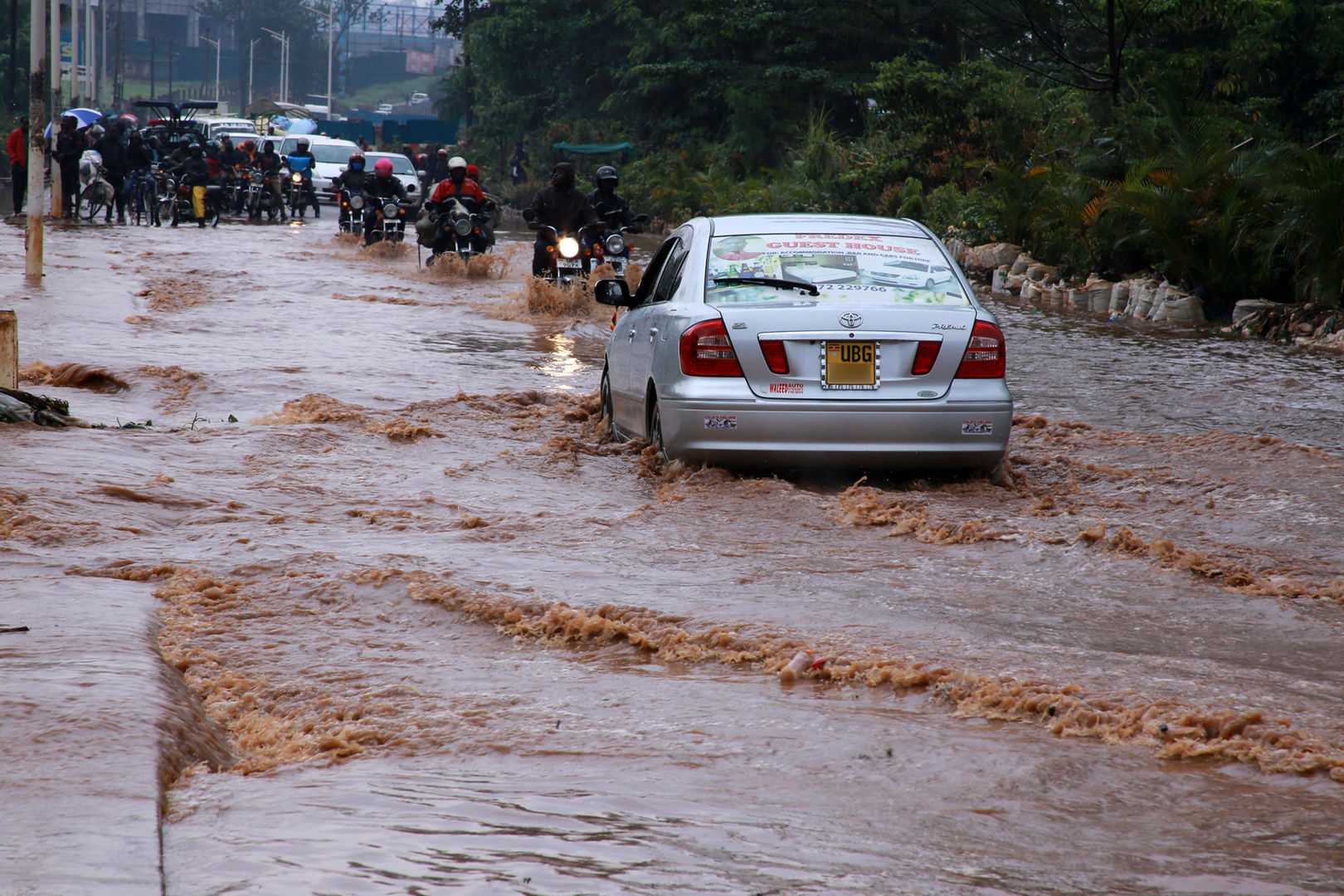
Hydroplaning occurs when your tires lose contact with the road surface due to water buildup. If you feel your vehicle sliding or the steering becomes light, don’t panic. Ease off the accelerator gradually and avoid sudden steering movements or braking.
Keep your steering wheel straight and wait for your tires to regain contact with the road. Once you feel control returning, gently steer in your intended direction. If you must brake, do so gently and gradually.
To prevent hydroplaning, avoid driving through large puddles when possible, maintain proper tire pressure, and ensure your tires have adequate tread depth. Consider reducing speed further in areas where water tends to accumulate.
Route Planning and Timing
During rainy season, allow extra time for all journeys. Heavy rain can significantly slow traffic, and you may need to take longer alternative routes to avoid flooded areas. Plan your trips during daylight hours when possible, as driving in rain at night presents additional visibility challenges.
Monitor weather forecasts and postpone non-essential trips during severe weather warnings. If you must travel during heavy rain, inform someone of your route and expected arrival time.
Consider the timing of your journey. Early morning and late afternoon often see the heaviest rainfall during Uganda’s rainy seasons. Mid-morning and early afternoon may offer better conditions for travel.
Emergency Preparedness
Carry an emergency kit in your vehicle during rainy season. Include a flashlight, basic tools, phone charger, first aid supplies, and emergency contact numbers. Keep some drinking water and non-perishable snacks in case you become stranded.
Ensure your mobile phone is fully charged before traveling and consider carrying a power bank. Mobile coverage can be vital for calling for help or checking road conditions.
Know the locations of reliable mechanics and towing services along your regular routes. Keep their contact information readily available, as mechanical issues are more common during wet weather.
Specific Considerations for Uganda’s Road Network
Uganda’s road network includes various surface types, each presenting different challenges during rain. Tarmac roads can become slippery and may have potholes that fill with water, making them invisible. Approach areas with standing water cautiously, as they may conceal deep potholes.
Murram roads become particularly treacherous when wet, often turning into muddy, slippery surfaces. These roads may become impassable during heavy rains. If you must travel on murram roads, consider using a four-wheel-drive vehicle and inform others of your travel plans.
Be aware of the increased risk of landslides in hilly areas during prolonged heavy rain. Avoid routes through areas known for slope instability during the rainy season.
When to Avoid Driving
Recognize when conditions are too dangerous for travel. If rainfall is so heavy that you cannot see the road clearly, pull over and wait. If flooding is widespread in your area, postpone your journey until water levels recede.
Avoid driving during thunderstorms with high winds, as falling trees and debris create additional hazards. If you’re caught in such conditions, find solid shelter and wait for the storm to pass.
Listen to local radio stations for road condition updates and weather warnings. Authorities may issue advisories about specific routes or areas to avoid during severe weather.
Conclusion
Driving during Uganda’s rainy season requires patience, preparation, and heightened awareness. The key to safe travel lies in understanding the unique challenges presented by local conditions and adjusting your driving accordingly. Proper vehicle maintenance, reduced speeds, increased following distances, and good judgment about when to travel are essential elements of rainy season driving safety.
Remember that no destination is worth risking your life. When in doubt, it’s always better to postpone your journey or seek alternative transportation. By following these guidelines and staying informed about weather and road conditions, you can navigate Uganda’s rainy seasons safely and confidently.
The rainy season brings life-giving water to Uganda’s landscape, but it also demands respect from motorists. Drive carefully, stay alert, and prioritize safety over speed or convenience. Your cautious approach during these challenging months will help ensure you and other road users remain safe throughout the rainy season.
To rent a car during the rainy season in Uganda – simply contact us now by sending an email to info@ugandacarrentalservices.com or call us now on +256-700135510 to chat/ speak with reservations team.

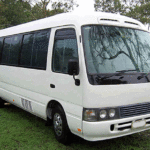

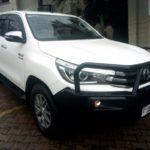





Related Articles
Top Tourist Attractions to Visit in Eastern Uganda
A Guide to Stress-Free Christmas Car Rentals In Uganda
Uganda 4×4 Vehicle Checklist: Gorilla Trekking & Game Drives